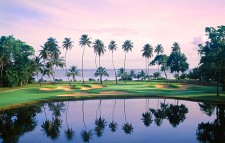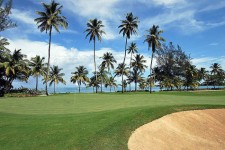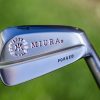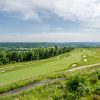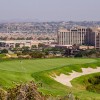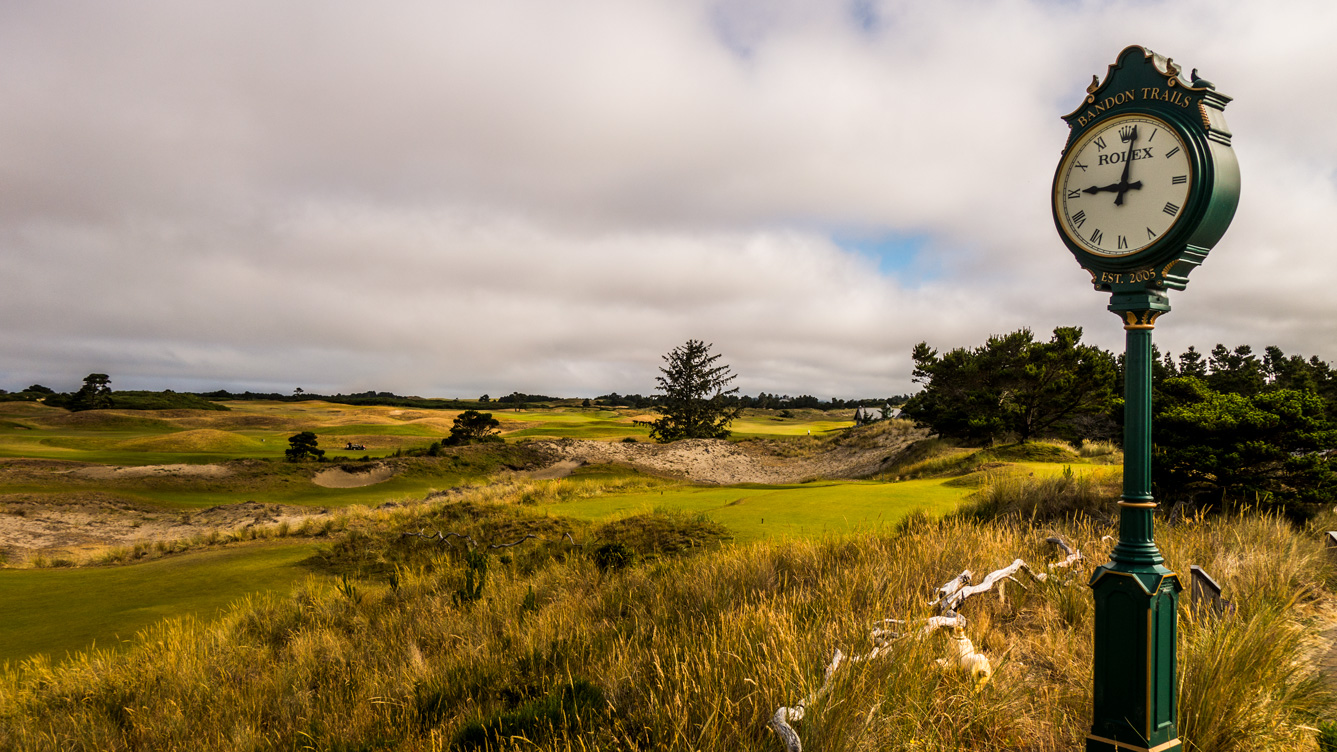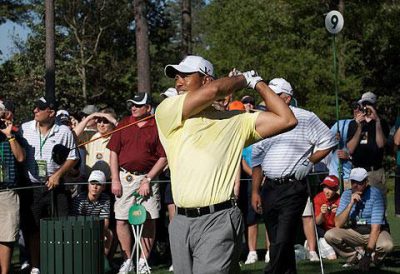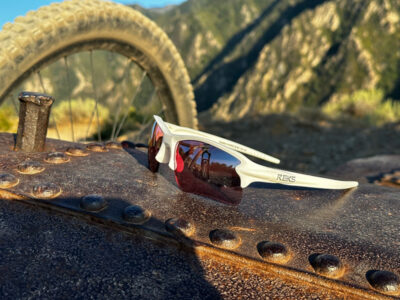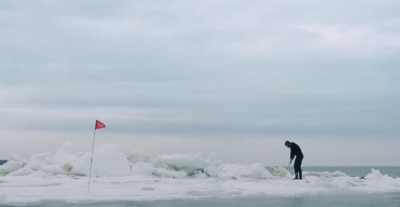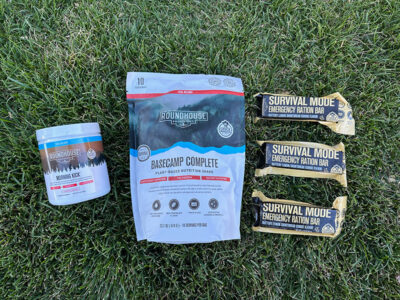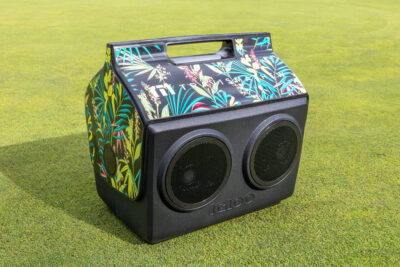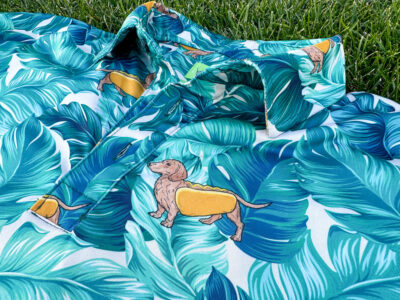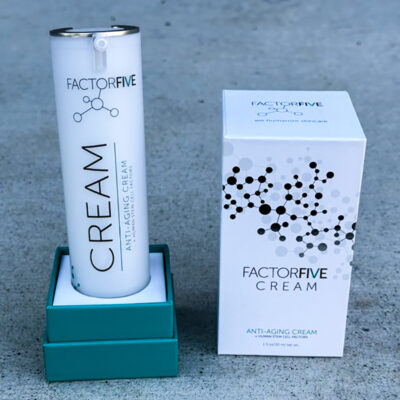Review and discussion: Puerto Rico’s newly restored Dorado Beach East Course
Categories: Course Reviews • Golf Courses • Golf Life • Golf Lifestyle • Reviews • Travel
Dorado Beach East Course Overview
A few weeks ago I had the pleasure of playing on the first official day play resumed at the recently “restored” Dorado Beach East Course at Dorado Beach Golf Club in Puerto Rico, designed as a nine hole course originally in 1958 by one of golf’s most famous architects, Robert Trent Jones Sr. The course was brought up to 18 holes in 1966. Many of the palm tree lined holes on this track are bordering or looking out over the beautiful blue water of the Caribbean. The weather is always warm and the course always plush because of the massive amount of precipitation the area receives year round. The East Course is one of four courses at the resort and one of two RTJ Sr. designs, the West being the other.
Restoration
Over the years shot values, sight lines and aesthetics changed on the East Course. Natural changes in vegetation, advancements in golf equipment technology, and subsequent redesigns by other architects were the cause of those aesthetic and playability issues. It took some serious golf balls for Dorado Beach to recognize that the course needed work to return it to its original great form and to stay competitive and comparable to other resort courses. It took even more golf balls to shut it down for a year and a half and get the job done. Naturally, the best choice for restoring the East Course would be someone who knew Robert Trent Jones Sr. designs and concepts first hand, someone named Robert Trent Jones II (Jr.).
Having not played the previous versions of the course, I can’t comment or compare the revisions. I’ll simply approach this piece like one of my normal reviews, covering tee-approach-green along with aesthetics and amenities.
I had the pleasure of talking about the course and the changes with RTJ II’s President and chief designer, Bruce Charlton as well as Dorado Beach resort’s head agronomist Brad Boyd. See those comments farther below.
Stats
Par: 72 (36-36)
Yardage (tips): 7,186
Rating: 75.1
Slope: 135
Tee box sets: 5
Fairway grass: Zoysia and 419 Bermuda mixture
Greens: Ultra-dwarf champion Bermuda
Bunkers: 76 (reduced from 84)
Caddies: Caddies and forecaddies available
Rental clubs: $59
Routing
The track winds throughout the 1400 acre Dorado Beach property with hardly any holes paralleling each other. Hole shapes are interesting, framing up a nice visual from the tee. The doglegs provide many opportunities for working the ball off the tee either direction while strong changes in elevation challenge players in various ways, from tempting them to go for drivable par-4s to managing approach shot positions and yardages.
Tee
As mentioned in the routing comments, tee shots frame up very nicely from both an aesthetic perspective and a game management perspective. The tee shots aren’t terribly intimidating, but that doesn’t mean a bad tee shot won’t be penalized, because it will. With so many palm trees, such dense vegetation and many other sand and water hazards, finding the fairway from the tee gets a hole off to a great start.
Those who like to shape the ball will enjoy working it around the doglegs of the East Course. There are a few holes like the signature par-5 4th, where bombers can make an aggressive tee shot to cut the corner of the dogleg. The reward for making it over the water hazard left of the dogleg-left fairway, is a 2nd shot with an iron into a par-5. The reward for not executing that aggressive play, is hitting your 3rd shot (2nd being a penalty for going in the water hazard) from 300+ yards over water to a layup position short of another body of water. Making bogey at that point would be impressive.
Another fun corner to cut is #15, a short and downhill par-4. Bombers can try to fly the trees left and hit the green from the tee. But as I saw in my own group, a nice conservative draw 3-wood can be a better choice. My 2nd shot, after the conservative 3-wood, was from the middle of the fairway with a pitching wedge into the green. The aggressive player in my group who hit driver was chipping back out to the fairway from the palm trees.
Fairway
The fairways are fairly wide and inviting on the East Course. They’re not tricked up with a ton of rolling hills or undulations. Balls which hit the fairway will typically stay there. Finding the fairway will typically result in a fairly flat lie and stance.
The doglegs once again factor in greatly on this course. Well positioned shots in the fairway are rewarded with nice angles to the green. Shots which don’t make the dogleg or are worked the wrong way, can be blocked or require some creative curving of the ball to get close to the hole.
The fairway bunkers are challenging, but as I found on a few occasions a green in regulation can be achieved from many of them. A couple others though, will require a wasted shot to get back into play.
Green
The greens and green complexes are one of the shining stars of the East Course. They’re very pretty to look at and even more fun to play. Many of the greens feature creative bunkering, mounding, interesting green shape and a few water hazards. Many new collection areas have been added in the restoration.
The greens are fairly large, though their size was reduced a bit. Shapes and slopes make putting a challenge and reward touch with the putter and short game. There are a few positions one can get into which make 2-putting a real challenge, but the greens are more than fair and not tricked up.
For some reason I found chipping and pitching at the East Course to be very rewarding. I hit some fantastic chips, like on the par-3 2nd where my tee shot hung up on the hill left of the green instead of rolling into the water hazard which runs the length of the hole. I turned what looked like a 5 to a 3 with a good chip.
The entrances to the greens have been improved to help those who like to run or bounce up some shots. But, one must be in tune with the current conditions. If it has been raining quite a bit, which often happens in Puerto Rico, run up shots may be deadened by soft, wet ground.
Aesthetics
Part of the restoration concept called for increasing the aesthetics of the course. The new course needed more ocean views and more of a sea side personality. Sea side golf wasn’t as high a priority as hotel and beach clubs were when the course was built. Add to that the fact that the vegetation grew in for 50 years and closed the course in. That overgrown vegetation was removed or trimmed back to expose ocean views on 15 of the 18 holes. See the HOG Dorado Beach East Course Image Gallery.
Did I mention palm trees and the Caribbean? Not much more needs to be said when speaking of aesthetics.
Signature Hole(s)
Dorado Beach’s PR has rightfully anointed the par-5 4th hole (first image), with the water short of the green, palm trees and Caribbean behind, the signature hole. Can’t say I disagree. But there are several holes which could easily be called signature holes like the a fore mentioned par-3 3rd.
My personal favorite is the par-4 4th. I LOVE the look of the green complex as well as the challenge of the 4th’s uphill approach. One of my favorite pictures I took from the trip was the shot (below) of this hole with my buddy Jay Flemma one group ahead playing his approach.
Chatting With Chief Designer Bruce Charlton
It was a total pleasure to get to speak with President and chief designer for RTJ II, Bruce Charlton. We talked a lot about what the original hole designs were meant to present the player and what it took to restore some of those lost qualities. Some changes were very minor, like trimming some trees away from areas to increase visibility and aesthetics, while other changes required moving some serious earth, lengthening bunkers, getting rid of the old out of place pod tees and replacing them with signature RTJ landing strip style tee boxes.
Speaking of the landing strip tees, the 10th could be a landing strip for small aircraft. It was classic that the subject of the 10th tee came up while eating dinner with Bruce. I’d noticed that the tee box was extremely long–the longest I’d ever seen. I was so intrigued by its length that I shot it from back to front with my laser range finder out of curiosity to see how long it was. I had it at 153 yards. When I mentioned the tee’s length to Bruce, he asked me if I had a guess as to how many yards it was. I told him (without divulging the prior laser measurement) that my guess was 153 yards. He corrected my guess and told me it was 152. How great on a golf geek level is that conversation? Amazing that Bruce knew the length of that tee off the top of his head.
Chatting With Agronomist Brad Boyd
If you really want to get some great info about a course, hang around with the superintendent for a while. I didn’t hang with the super because Dorado Beach doesn’t have one. But Dorado does have a “chief agronomist,” Brad Boyd. I had several fun and even more golf geeky discussions with Brad about the course design, irrigation, grasses, sand, flowers and more.
Brad had a big roll in the restoration from a completely different angle. One of the tasks among many, was to make sure that course irrigation and regular maintenance was possible and could be done at a reasonable cost, and in an eco friendly way.
One great nugget I managed to get out of Brad was related to the Dorado bunker sand. The local conditions, with so much water falling all the time and so much moisture in the air, proved to be tough on the sand. The sand would compact and stick to itself, getting harder over time. Brad figured out that the sand had many unwanted minerals sticking to it. Those minerals bonded the sand grains together and over time produced that unwanted, hard, compacted sand. In order to eliminate the bonding of the sand grains and thus eliminating the hardening/compacting, they wash all of their sand. Woa.
Amenities
I’ll be covering the 1,400 acre seaside Dorado Beach resort itself in another review more focused on golf travel and lifestyle. Stay tuned for that piece coming up. Needless to say the resort has every luxury and amenity any golf traveler would want and more.
The clubhouse is fantastic and beautiful. Many fine apparel items and great selection of golf gear are available in the pro shop. Above the pro shop is a dining area and bar with inside and outside seating. The atmosphere up there is wonderful. The clubhouse and pro shop staff always bring their A-game.
Of course there’s a full practice facility, including range and short game/putting.
Conclusion
The Dorado Beach East Course is an excellent resort style course, one that won’t beat you up but still provides a great challenge. If you have the pleasure of playing there, bring your camera.
Related Links
Hooked On Golf Blog Dorado Beach East Course Image Gallery
Hooked On Golf Blog Dorado Beach West Course Image Gallery
Hooked On Golf Blog Dorado Beach Resort Image Gallery
Jay Flemma’s Dorado Beach Diaries – Part 2
Credits
* First photo courtesy of Dorado Beach, shot by Warren Grant.
Hole two design notes courtesy of Dorado Beach and Robert Trent Jones II, Golf Course Architects.
All other images used in article and in HOG Dorado Beach East Course Image Gallery by Tony Korologos, © copyright 2011-2012.

